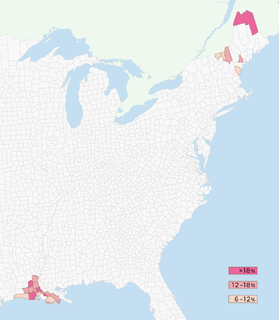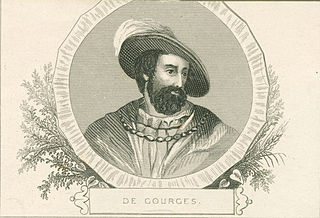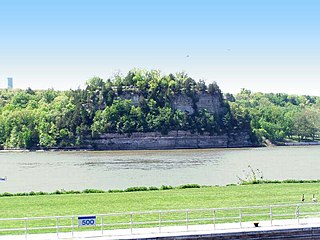 W
WJulien Dubuque was a French Canadian of Norman origins from the area of Champlain, Quebec who arrived near what now is known as Dubuque, Iowa, which was named after him. He was one of the first European men to settle in the area. He initially received permission from the Meskwaki Indian tribe to mine the lead in 1788, which was confirmed by the Spanish, who gave him a land grant in 1796.
 W
WMichel-Ange Du Quesne de Menneville, Marquis Du Quesne was a French Governor General of New France. He was born in Toulon, France.
 W
WThe French language is spoken as a minority language in the United States. Roughly 2.10 million Americans over the age of five reported speaking the language at home in a federal 2010 estimate, making French the fourth most-spoken language in the nation behind English, Spanish, and Chinese.
 W
WDominique de Gourgues (1530–1593) was a French nobleman and soldier. He is best known for leading an attack against Spanish Florida in 1568, in response to the destruction of the French Fort Caroline. He was a captain in King Charles IX's army.
 W
WThe Battle of Jumonville Glen, also known as the Jumonville affair, was the opening battle of the French and Indian War, fought on May 28, 1754, near present-day Hopwood and Uniontown in Fayette County, Pennsylvania. A company of colonial militia from Virginia under the command of Lieutenant Colonel George Washington, and a small number of Mingo warriors led by Tanacharison, ambushed a force of 35 Canadiens under the command of Joseph Coulon de Villiers de Jumonville.
 W
WFort Le Boeuf was a fort established by the French during 1753 on a fork of French Creek, in present-day Waterford, in northwest Pennsylvania. The fort was part of a line that included Fort Presque Isle, Fort Machault, and Fort Duquesne.
 W
WJacques le Moyne de Morgues (c. 1533–1588) was a French artist and member of Jean Ribault's expedition to the New World. His depictions of Native American life and culture, colonial life, and plants are of extraordinary historical importance.
 W
WNew Paltz is a U.S. town in Ulster County, New York. The population was 14,003 at the 2010 census. The town is located in the southeastern part of the county and is south of Kingston. New Paltz contains a village also with the name New Paltz. The town is named for Palz, the dialect name of the Palatinate, called Pfalz in standard German.
 W
WThe Pays d'en Haut was a territory of New France covering the regions of North America located west of Montreal. The vast territory included most of the Great Lakes region, expanding west and south over time into the North American continent as the French had explored. The Pays d'en Haut was established in 1610 and dependent upon the colony of Canada until 1763, when the Treaty of Paris ended New France, and both were ceded to the British as the Province of Quebec.
 W
WStarved Rock State Park is a state park in the U.S. state of Illinois, characterized by the many canyons within its 2,630 acres (1,064 ha). Located just southeast of the village of Utica, in Deer Park Township, LaSalle County, Illinois, along the south bank of the Illinois River, the park hosts over two million visitors annually, the most for any Illinois state park.